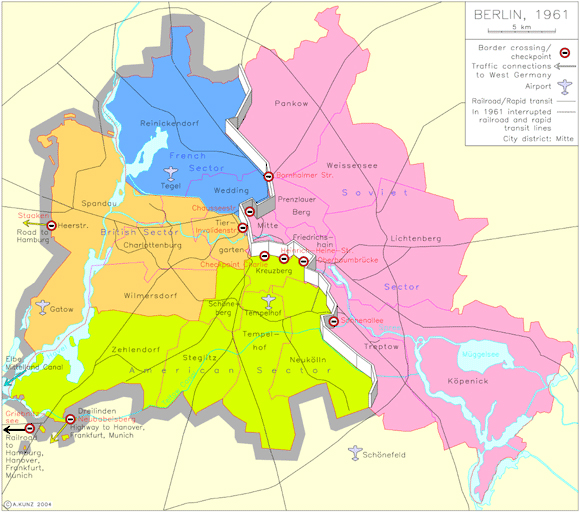













INTRODUCTION | DOCUMENTS | IMAGES | MAPS | EDITOR
|
While the city's internal road and railway links were severely disrupted by the building of the Berlin Wall, they were not totally crippled at first. Suburban train traffic between the western and eastern parts of the city ceased entirely, as did traffic between Berlin's environs and West Berlin, but the subway line running through East Berlin on a north-south axis continued to operate. It made only one stop, however, in East Berlin – at the heavily guarded Friedrichstraße station. Long-distance travel to the Federal Republic (via road, railway, and canal) proceeded without interruption via the checkpoints indicated on the map.
Please click on print version (below) for a larger version with enhanced resolution.
IEG-MAPS, Institute of European History, Mainz / © A. Kunz, 2004 |
 print version
print version return to map list
return to map list previous map
previous map
